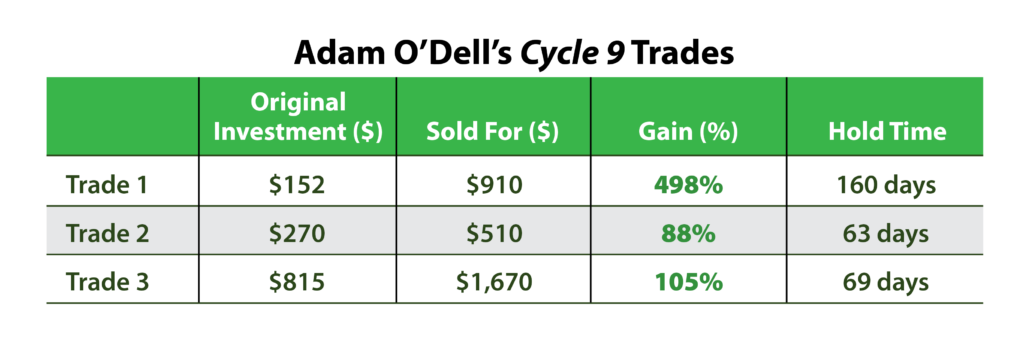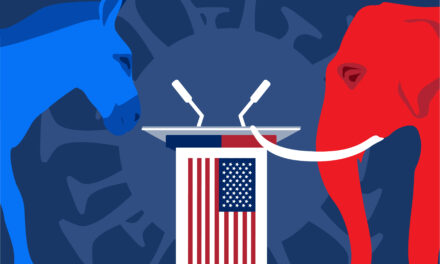Hedge fund manager Bill Ackman of Pershing Square Capital Management has hit some home runs over his long career. He’s also had his share of high-profile strikeouts.
But in March, he made what I’d call the greatest trade in the history of Wall Street. He turned $27 million into $2.6 billion in just three weeks as the COVID bear market got underway.
Investors have made larger payouts over the years. For instance, John Paulson made $20 billion betting against mortgage securities in the 2008 meltdown.
But in terms of bang for the buck, it’s hard to find a trade better than Ackman’s. He made nearly 100 times his money in what amounts to the blink of an eye.
After seeing what happened in China and Europe, Ackman knew that the new coronavirus would wreak havoc on the stock market — even if, stateside, no one seemed too concerned at the time.
But he also knew it wasn’t practical to liquidate a portfolio his size and go net short. His total assets under management back in February amounted to a little over $7 billion. It’s difficult to turn a battleship of that size on a dime.
Plus, Ackman styles himself as a long-term investor in the mold of Warren Buffett, and he worried that dumping his core positions would send the wrong message. So, instead, he bought portfolio insurance, spending $27 million in credit default swap premiums.
The swaps were essentially a fear trade. They would pay off if bond yield spreads widened. (This happens when investors get scared and dump corporate bonds and then run to the safety of U.S. Treasurys.)
When the world blew up, the swaps paid off. Ackman walked away with a couple of billion dollars in profits.
But then it gets better. He wasted no time rolling the $2.6 billion in profit into his favorite stocks, which sold at depressed prices in March. He then made another $1 billion as they recovered.
Well played, sir.
We can learn lessons from Ackman, even as individual investors without access to the specific instruments he traded.
We can glean plenty of wisdom from the greatest trade in history.
Lesson 1: Look for Asymmetric Payoffs
Ackman’s trade had what’s known as an asymmetric risk profile. In plain English, this means that he had the ability to win big, but he couldn’t really lose big.
Sure, $27 million is a lot of money for you or me. But it was less than half a percent of Ackman’s fund at the time of the trade.
If COVID had never hit American shores and the market didn’t implode back in March, the loss wouldn’t have hurt Ackman badly.
As ordinary investors, we don’t have access to exotic insurance products like these.
But we have access to regular, good old-fashioned options, which also offer asymmetric payoffs.
You can lose 100% of your investment if you buy an option and it expires worthless. But your upside is limitless.
Money & Markets’ Chief Investment Strategist Adam O’Dell created an options trading system that harnesses the power of momentum.
This ensures a better-than-average chance of success.
Take a look at just three of the winning trades Adam’s Cycle 9 Alert readers had the chance to make this year:
Lesson 2: Be Willing to Take a Profit … and to Change Your Mind
Ackman scored his massive profit by being willing to cash out. Had he gotten greedy and held out for more, he could have lost his gains as bond spreads returned to normal levels.
Ackman has an ego. He likes to be right. But he showed real discipline in taking the win and not holding out for more.
Furthermore, because he wasn’t doctrinaire about it, he was willing to reverse his trade, bet the other way, and add that additional $1 billion in profit.
Adam O’Dell, the architect of Cycle 9 Alert, speaks to the same idea. He follows an exit rule that, as he explains it, keeps him honest.
He’s written:
Let’s face it … every investor I know is tempted to squeeze out every little ounce of profit from a trade that’s going well.
But if I’ve learned one thing in my career, it’s that a wise investor isn’t greedy with his momentum profits.
Momentum is a true gift. It allows us the opportunity to make far more profits in just a few months, than many buy-and-hold investors make in a year! So, as the saying goes, “you shouldn’t look a gift horse in the mouth.”
I like to take the meat of a momentum move, and then secure the market-beating profits I’ve earned before anything has the chance to go wrong. Even if that means taking a 250% profit, for example … when I might have been able to squeeze out a 300% profit by waiting longer (and risking more).
So, the lesson here is not to be ideological. Don’t identify as a bull or a bear. That just clouds your judgment.
Be objective and willing to take either side of the trade if the opportunity presents itself.
Lesson 3: Roll With the Punches
And finally, have thick skin. Be willing to go against the grain.
Ackman has suffered monumental failures in his career as a manager.
He’s lost himself and his investors billions of dollars on trades that, in retrospect, were phenomenally stupid. For example:
- He bet the farm on the fraudulent Valeant Pharmaceuticals.
- He tried, and failed, to turn JC Penney around.
- And he lost a fortune in a quixotic quest to prove that Herbalife was a Ponzi scheme.
Along the way, many of his investors dumped him, and the financial press lampooned him.
That’s OK. We all make phenomenally stupid trades if we play the game long enough. It happens.
At least you and I don’t have to worry about CNBC or the Wall Street Journal reporting every boneheaded trade we make like Ackman does.
When you make a bad trade, learn from it, analyze it and then — most importantly — put it behind you.
Ackman never would have had the confidence to score the greatest trade in history if he were still stewing about his past losses.
Money & Markets contributor Charles Sizemore specializes in income and retirement topics. Charles is a regular on The Bull & The Bear podcast. He is also a frequent guest on CNBC, Bloomberg and Fox Business.
Follow Charles on Twitter @CharlesSizemore.






